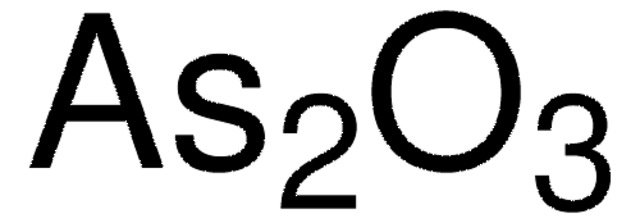203505
Ammoniumeisen(II)-sulfat Hexahydrat
99.997% trace metals basis
Synonym(e):
Eisen(II)-ammoniumsulfat, Mohrsches Salz
About This Item
Empfohlene Produkte
Assay
99.997% trace metals basis
Form
crystalline
Verunreinigungen
≤35.0 ppm Trace Metal Analysis
mp (Schmelzpunkt)
100 °C (dec.) (lit.)
SMILES String
N.N.O.O.O.O.O.O.[Fe++].OS([O-])(=O)=O.OS([O-])(=O)=O
InChI
1S/Fe.2H3N.2H2O4S.6H2O/c;;;2*1-5(2,3)4;;;;;;/h;2*1H3;2*(H2,1,2,3,4);6*1H2/q+2;;;;;;;;;;/p-2
InChIKey
MQLVWQSVRZVNIP-UHFFFAOYSA-L
Suchen Sie nach ähnlichen Produkten? Aufrufen Leitfaden zum Produktvergleich
Allgemeine Beschreibung
Anwendung
- As a precursor to synthesize iron oxide nanoparticles deposited over bismuth carbonate/ACF(fiber). This material can be used as an efficient catalyst for wastewater treatment.
- As a negative electrolyte to develop a vanadium/iron redox flow battery (V/Fe RFB).
- To modify methyl orange dye via metal insertion reaction. The modified dye acts as a light harvester on DSSC (Dye-Sensitized Solar Cell).
- As a dopant to prepare nano-titania catalyst by the sol-gel method. The doping with (NH4)2Fe(SO4)2·6H2O leads to photocatalytic activation of titania in the visible light range.
Lagerklassenschlüssel
13 - Non Combustible Solids
WGK
WGK 1
Flammpunkt (°F)
Not applicable
Flammpunkt (°C)
Not applicable
Persönliche Schutzausrüstung
dust mask type N95 (US), Eyeshields, Gloves
Analysenzertifikate (COA)
Suchen Sie nach Analysenzertifikate (COA), indem Sie die Lot-/Chargennummer des Produkts eingeben. Lot- und Chargennummern sind auf dem Produktetikett hinter den Wörtern ‘Lot’ oder ‘Batch’ (Lot oder Charge) zu finden.
Besitzen Sie dieses Produkt bereits?
In der Dokumentenbibliothek finden Sie die Dokumentation zu den Produkten, die Sie kürzlich erworben haben.
Kunden haben sich ebenfalls angesehen
Unser Team von Wissenschaftlern verfügt über Erfahrung in allen Forschungsbereichen einschließlich Life Science, Materialwissenschaften, chemischer Synthese, Chromatographie, Analytik und vielen mehr..
Setzen Sie sich mit dem technischen Dienst in Verbindung.




